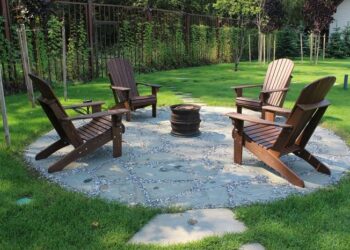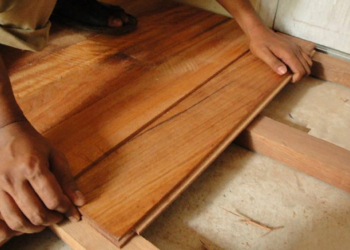If in your site it happened that the trees did not need to be taken out immediately and put them in the scrap. Because this unforeseen circumstance can be used to prepare and create, for example, a beautiful garden path from trees. Landscape design begins before everything with layout.
Few people can be struck by paths paved with special tiles or paved or flooded with concrete mixture. But the use of a tree trunk as a material for the path will look fresh and unusual. It is worth saying in the past the entire sidewalk, bridge and yards were laid out only with boards and logs.
What is needed in order to make the path of your dreams:
– Sand;
– log or tree trunk;
– painting brush;
– benzo- or electric saw;
– concrete;
– Olifa;
– roll of polyethylene film;
– clay (red);
– Capacity.
Where to start
Tree is needed for cutting rings with a saw. The diameter of the ring should be no more than 5 centimeters. Next, you should fill the iron container with olifa and warm up until the moment when it begins to boil. After that, apply a brush heated to the olifa to the rings and wait until they completely dry out.
How the path is arranged
First decide what size of the path you need. Having solved this issue, proceed to digging the soil, the depth should be no more than half of the bayonet of the shovel.
Put the dug pit with a film or fall asleep with clay. Clay, like a polyethylene film, is necessary as materials for waterproofing, they minimize the contact of wood with the soil and reduce the rotten speed of wood.
Sprinkle a layer of sand on top of the film or clay and only then proceed to laying out the sawn rings. Preferably tightly lay the rings. Where there are too large gaps, put large rings. Using the level, check if all the rings lay down exactly.
Pour the gaps with concrete and wait until it freezes.
As a result, you will get a beautiful wood track. If the plot is designed in the spirit of old Scotland, where mainly structures made of wood and brick, a wood path will be very by the way. In addition, it is characterized by increased resistance to early wear and precipitation.














